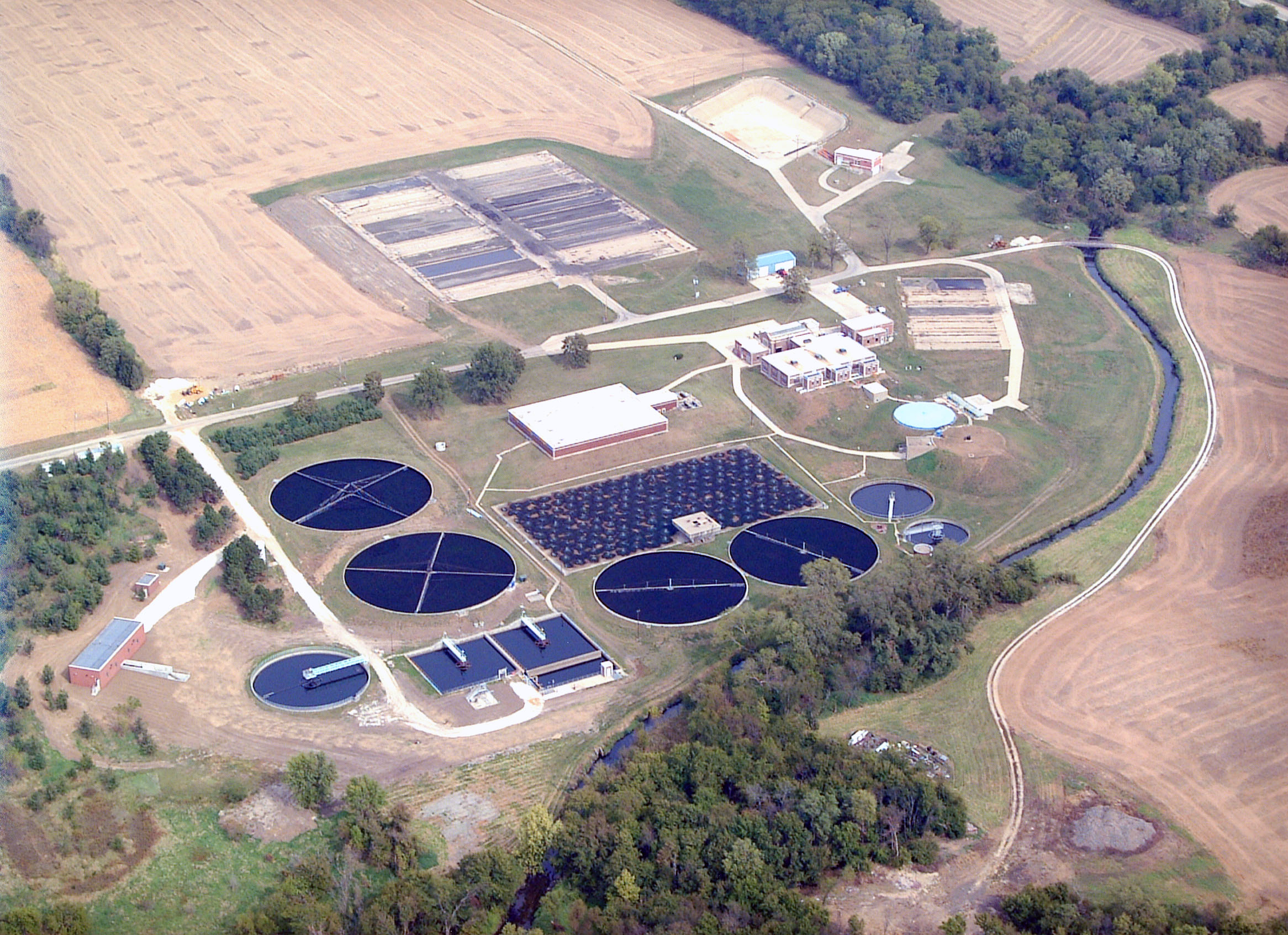Treatment Plant
Treatment Plant Process
Biosolids
History
Treatment Plant Virtual Tour
Compliance
What is Wastewater Treatment?
One of the most common forms of pollution control in the United States is wastewater treatment. The country has a vast system of collection sewers, pumping stations, and treatment plants. Sewers collect the wastewater from homes, businesses, and many industries, and deliver it to plants for treatment. Most treatment plants were built to clean wastewater for discharge into streams or other receiving waters, or for reuse.
Wastewater Treatment Plant Process
Bar Screens
Mechanically-operated devices are used to remove large suspended or floating objects from wastewater. Once removed, the screenings are disposed of at the landfill. Click this box again for additional information.
Excess Flow Basins
A diversion structure that receives flow when the treatment plant is at maximum capacity. GSD operates two lagoons in series. Click this box again for additional information.
Raw Sewage Pumps
A series of large pumps that lift the wastewater to various treatment processes. These pumps range from 50-100 Hp and use electricity, methane or natural gas as a fuel source. Click this box again for additional information.
Grit Removal
A small tank, or set of tanks, where the velocity of the wastewater slows enough for heavy inorganic particles, such as sand, to settle out. Click this box again for additional information.
Primary Clarifiers
In this series of tanks, the flow of wastewater is reduced further to allow small suspended particles, both organic and inorganic, to settle out, and lighter material to float to the surface. Click this box again for additional information.
Trickling Filter
Concrete beds containing rock media over which settled wastewater from the primary clarifiers is distributed. The media supports the growth of aerobic organisms who feed on the passing wastewater, decomposing the organic pollutants within the wastewater. Click this box again for additional information.
Intermediate/Final Clarifiers
The trickling filter process produces light, settleable solids which settle to the bottom of these tanks. Click this box again for additional information.
Tertiary Treatment
In this polishing step, the wastewater is filtered through polyester screens with 17 micron openings to further clarify the wastewater before it’s discharged. Click this box again for additional information.
Ultraviolet (UV) Treatment
The wastewater travels through channels glowing with the light of the UV lamps. The UV light permanently alters the DNA structure of pathogenic organisms within the wastewater. As a result, the organisms are no longer able to reproduce, and become non-infectious.
Receiving Stream
Treated wastewater is discharged to Cedar Creek which ultimately flows to the Mississippi River. Click this box again for additional information.

Biosolids Treatment
- Anaerobic Digestion
- Solids that have settled out of the wastewater are called biosolids. This material is collected and pumped to digesters. Anaerobic bacteria in these digesters operate similar to those in the human stomach by breaking down waste and creating fuel. The fuel can be used as an energy source at the treatment plant.
- Biosolids Dewatering
- The digested sludge is pumped to the biosolids dewatering building where two Huber Screw Presses dewater the sludge. A polymer is added to aid in water removal and the result is a drier “cake” sludge solid, which is stored under cover to keep dry from rain & snow.
- Biosolids Disposal
- The wastewater plant generates about 400-600 dry tons of sludge per year. The dried sludge contains nutrients that are valuable to crop production. For this reason, most of the sludge is applied to agricultural land as fertilizer. The remainder is sent to the local Landfill.
Treatment Plant History
The Galesburg Sanitary District was established November 14, 1924. The main treatment plant building was erected in 1930-1931 consisting of pump room, primary clarifiers, anaerobic sludge digesters fixed nozzle bed, final clarifier, and five sludge drying beds. The fixed nozzle bed (which discharges water intermittently on rock media) was one of the first treatment processes of its type in the United States. It attracted visitors from throughout the Midwest, is still in operation today, and could treat 5.5 MGD per day.
Plant improvements in 1945-1946 included two rotary trickling filters, another final clarifier (both are now intermediate clarifiers), and a secondary anaerobic sludge digester (with floating dome methane gas containment). The above wastewater processes are referred to as Plant 1.
Treatment plant capacity was increased to 22 MGD in 1970 by adding Plant 2, consisting of four primary clarifiers, two additional rotary trickling filters, two final clarifiers, contact tank, roundhouse pump station, and an additional anaerobic digester (nearly doubling primary digester capacity). In the late 1980’s plant personnel installed a 12 inch line from Plant 1 to the contact tank and increased plant capacity to 28 MGD.
Additional plant improvements completed in 1992-1994 were new screen house, 3 MG storm water lagoon, additional final clarifier, and twenty additional sludge drying beds. Plant wastewater recirculation was installed by District personnel in 2002.
In 2007, a filter building containing 8 drum filters was added to screen more solids from the wastewater, before it is discharged to Cedar Creek. The drum filters are capable of filtering 18 MGD.
An additional 6 MG storm water lagoon, with chlorination of the discharge, was brought online in July 2012. Total excess storm water capacity was increased to approximately 9 MG.
Message Us
Galesburg Sanitary District
2700 West Main St
Galesburg Il, 61401
Phone: (309)-342-0131
Fax: (309)-342-2842
